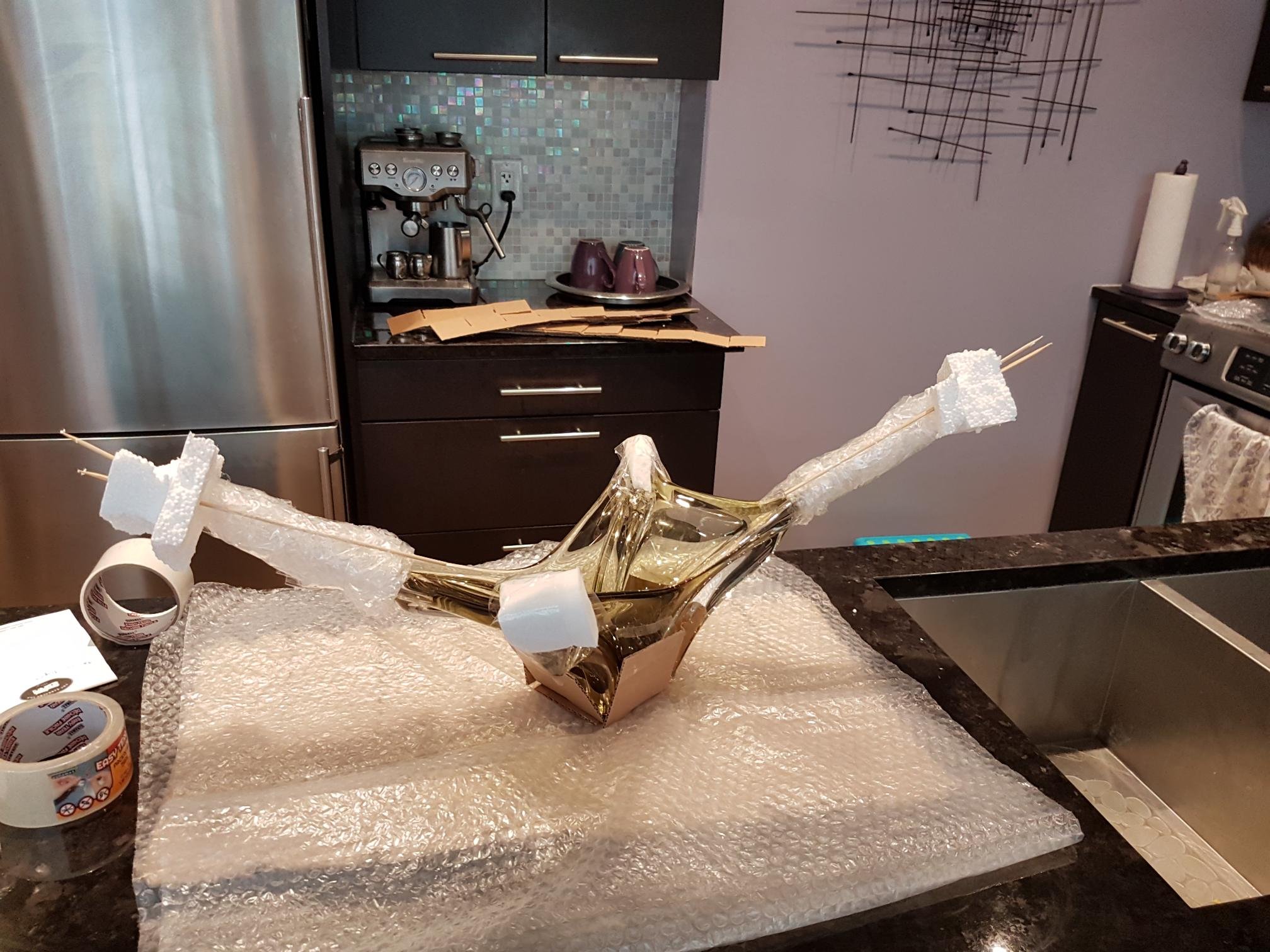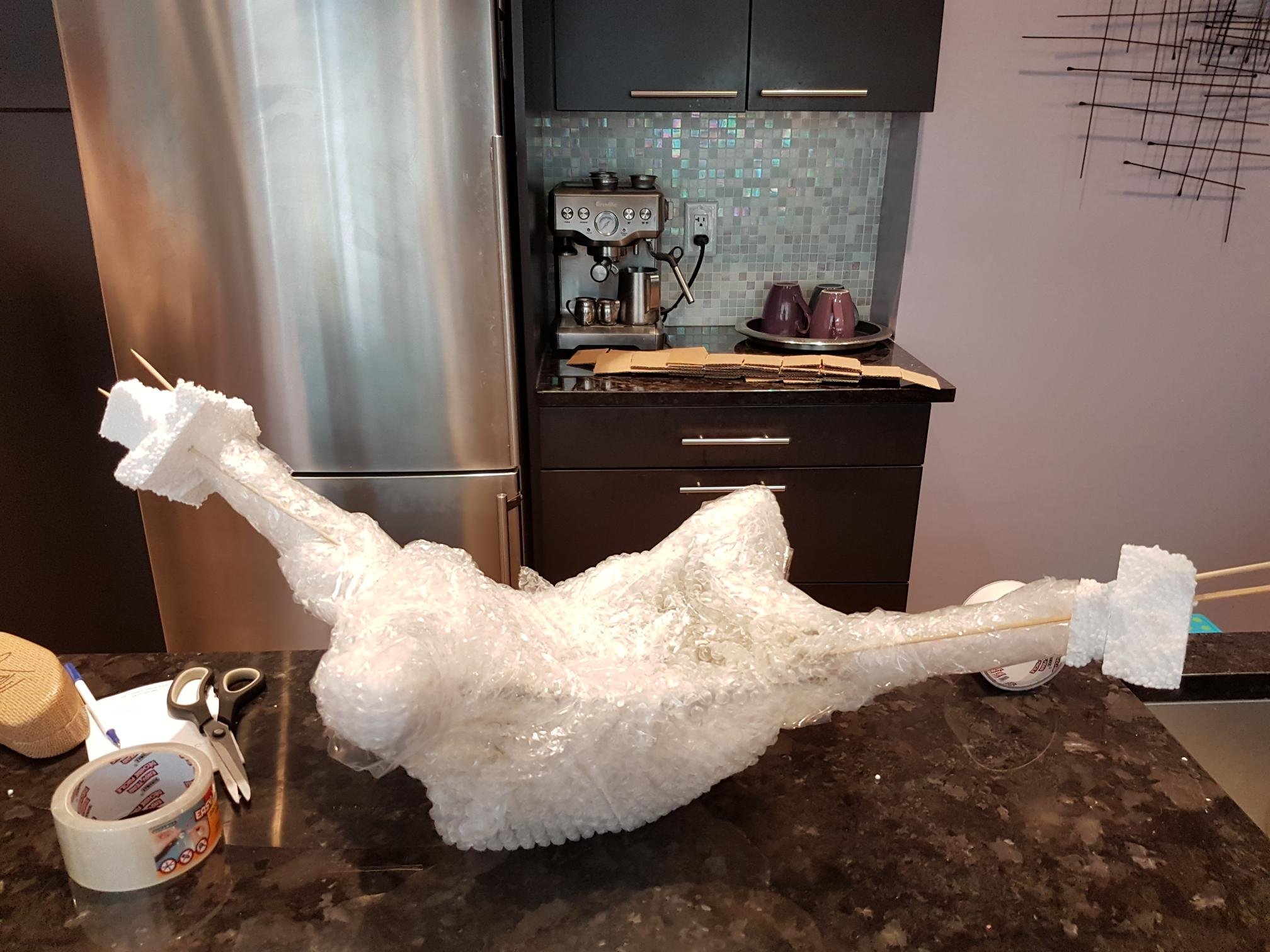Packing your glass for moving, storage or shipping
I have had alot of questions about shipping “how to’s” lately so that of course meant one thing - an article.
Packing glass for moves, storage and shipping demand extra care. Your first step – make sure the box size(s) you are using are appropriate. They can be neither too big or too small and they must be sturdy enough to bear weight and handling. A good selection of box sizes that are inexpensive but sturdy is readily available at Staples, Home Depot or U-Haul. And of course – plastic totes can always be used for either purpose.
-to pack a piece for transport or storage, ensure any and all decorative points and the base receives extra and separate padding. You may need to use supports like cardboard tubing or wooden skewers around especially elongated pulls.
-tape the protective padding around the piece securely – do not just drape.
-recycle, reuse and repurpose – food containers, padded envelopes, all the materials from pieces that you have had received… you can find a use for almost anything and everything when you need to either store or ship a piece.
-bubble wrap, “water noodles”, diapers, pillows, towels, Styrofoam blocks or sheets, newspaper… these are all effective packing materials. Packing peanuts and air pouches may be too light for heavier glass. Use both the large and small “bubbled” wrap. The larger bubbled sheets are excellent for heavier pieces and top and bottom box cushioning.
-reinforce box corners and the bottom and top before sealing.
-use proper packing tape.
-when you are ready to pack something up, make sure that you have enough supplies and have them all at hand before starting.
-do not stack cardboard boxes of heavy glass – if stacking is necessary, you need to use plastic totes.
-double box heavy and large pieces.
-never use boxes that are too big – the rule is “Pack it right, pack it tight.”
-do not butt your piece against the box edge – the outer perimeter should be buffered with shock absorbent packing material.
-ever so gently tilt the box back and forth box after sealing, if you sense any shifting, open and add more packing. If it moves now, it will break later.
-however, if a box is too small, the piece inside will be subject to every bump, jostle or worse that it will face during shipping. Most probably, arms, wings, tips will bear the brunt of pressure and impact – breakage is inevitable.
-if a smaller, lighter piece does not need to be double boxed but you still want to add just a little extra protection, wrap the box exterior in bubble wrap after sealing and then wrap in brown paper.
The smaller olive Chalet piece pictured below was listed on Kijiji but the seller would not ship. I was asked by a fellow collector out in Calgary to pick up, pack up and ship out. I personally own a like piece, the amber centerpiece, so I knew it was going to be a bit tricky but I was confident that I would be able to deliver safely, so I agreed.
I was lucky in that it was not as long as my piece (amber Chalet in foreground) but it was just as heavy as was a tad higher.
If you are sending a piece about which you have “travel concerns”, take photos of each packing stage and get your buyer to approve. Side pulls are wrapped. I attached wooden skewers to arms with styrofoam and bubble wrap so they are kept away from box edges and reinforced.
Base receives extra and separate protection. Large “bubbled” bubble wrap used here.
Entire piece is then wrapped in small “bubbled” bubble wrap which is securely taped.
A cardboard nesting “cradle” was made for extra support and to further limit movement during transit.
Double boxed. Both inner and outer boxes are sturdy and the perfect size. Packing peanuts were poured into the gaps at each end so the inner box was cushioned and immobilized.
2 cushions as the box topper to further protect and stabilize. Took me awhile to pack but this very tricky piece arrived safe and sound to its new home.







